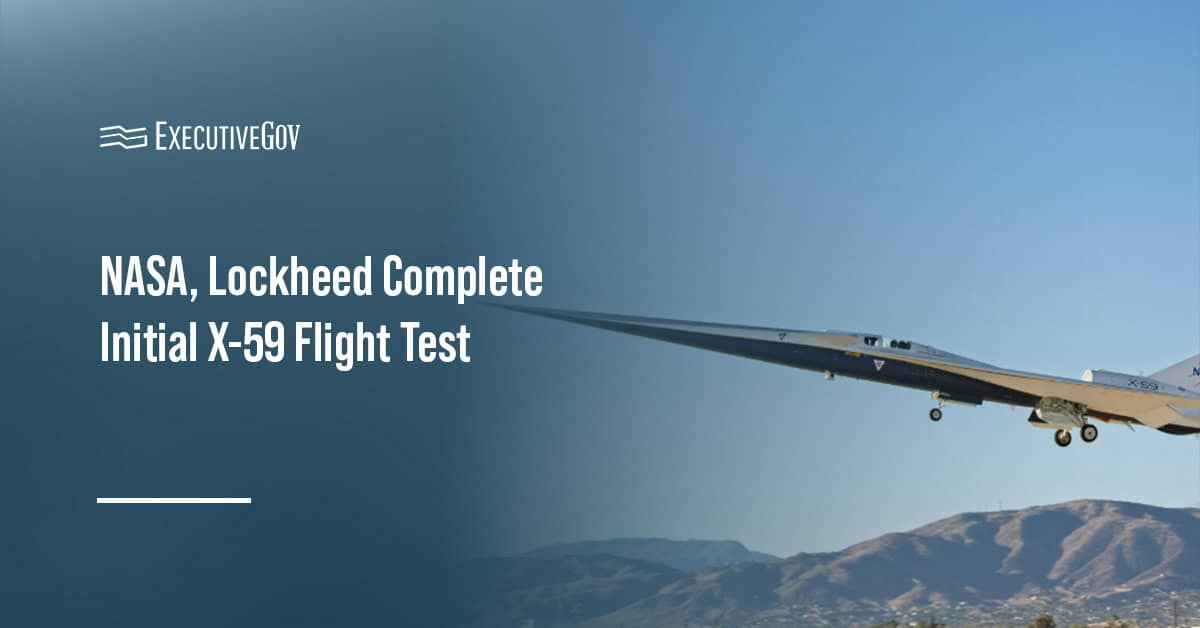NASA and Lockheed Martin’s Skunk Works division have conducted the initial flight test of the X-59, a supersonic aircraft designed to reduce the noise associated with sonic booms.
Lockheed said Tuesday the aircraft lifted off from the Skunk Works facility at U.S. Air Force Plant 42 in Palmdale, California, for its maiden flight. It landed near the space agency’s Armstrong Flight Research Center in Edwards, California.
Hear directly from top government and industry officials about emerging aviation technologies at the Potomac Officers Club’s 2026 Defense R&D Summit on Jan. 29!
Table of Contents
Verifying the X-59 Aircraft’s Performance
The aircraft’s performance matched expectations during the flight, demonstrating its initial flying characteristics and air data performance before safely landing at its new facility.
“We are thrilled to achieve the first flight of the X-59,” said OJ Sanchez, vice president and general manager of Skunk Works. “This aircraft is a testament to the innovation and expertise of our joint team, and we are proud to be at the forefront of quiet supersonic technology development.”
Acting NASA Administrator Sean Duffy described the aircraft as a “symbol of American ingenuity.”
“This work sustains America’s place as the leader in aviation and has the potential to change the way the public flies,” he added.
What Is the X-59?
The X-59 is designed to produce a gentle thump rather than a conventional sonic boom, which could allow commercial supersonic flights over populated areas in the future.
Flight testing over the coming months will expand the aircraft’s operational envelope, including its first supersonic flights to measure the sound signature and support community acceptance testing.
In July, NASA conducted a full-scale practice run to measure the noise produced by X-59 in preparation for the actual flight tests. In February, the agency performed electromagnetic testing to determine if the aircraft’s onboard systems would operate safely without interference.





